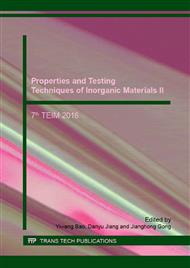p.429
p.434
p.440
p.445
p.450
p.455
p.460
p.465
p.470
Application of Electromagnetic Field Theory in the Study of Iron-Rich Slag Resistance Mechanism of Low Carbon MgO-C Refractories
Abstract:
Electromagnetic field (EMF) can promote the reaction between the Fe/Mn ion in slag and MgO-C refractories to form Mn-doped MgFe2O4 spinel. In order to further study the morphology and characteristics of Mn-doped MgFe2O4 spinel, the experiments were respectively carried out in medium-frequency induction furnace and resistance furnace. MgO-C refractories containing 6 wt.% carbon and iron-rich slag containing 53.62 wt.% Fe2O3 were used. The results show that the penetration layer in the slag line under EMF is obvious and the reduced Fe from FexO is distributed homogeneously in this layer. However in the resistance furnace having no EMF, there is not MgFe2O4 spinel but MgAl2O4 spinel formed. The iron content in Mn-doped MgFe2O4 spinels decrease dramatically from the erosion layer to penetration layer, while the manganese content in the spinel remains unchangeable.
Info:
Periodical:
Pages:
450-454
Citation:
Online since:
January 2017
Authors:
Keywords:
Price:
Сopyright:
© 2017 Trans Tech Publications Ltd. All Rights Reserved
Share:
Citation:


